|
But wait--there's more! If you are a poor photographer like me (rim shot!), you might like to shoot bigger film but want to spend smaller amounts of money. Well, believe it or not, it's possible! Allow me to introduce the Konica Rapid-Omega: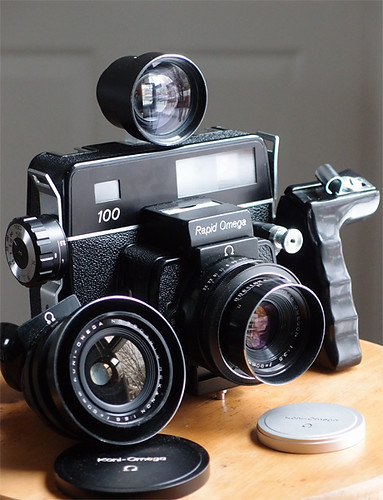 P2080192 by bdstickney, on Flickr Press rangefinder, 6x7 format, interchangeable lenses, and choice of fancy pro (Koni-Omega M, Rapid M, and Rapid Omega 200) or vanilla bodies (Koni-Omega Rapid and Rapid Omega 100). Descended from the Simmon Omega 120, doubtless one of the world's ugliest-ever cameras, but makes up for it by being awesome if somewhat obscure. What's awesome about it, you ask? -Generally cost only $100-$200 with a lens and a back -Pro versions have interchangeable backs. -Pump-action film advance (ka-CHUNK!) -Film path is straight (like the Pentax 6x7) for better film flatness. When film is advanced and shutter cocked, the pressure plate smooshes the film right against the gate for even more flatness. Flat flatty flat flat flat. -Accessory shoes out the rear end (three of them) -Not as heavy as the P6x7 -Built-in darkslide holder -Lenses are wicked sharp Konica Hexanons (until the Rapid Omegas, which + lenses were made by Mamiya, but still wicked sharp). A choice of wide angles (a Konica 60mm/5.6 or a Mamiya 58mm/5.6), a 90/3.5 standard lens, and 135mm and 180mm long lenses. Breech-lock mount, and all are rangefinder-coupled.  P2080193 by bdstickney, on Flickr Observe that the 60mm f/5.6 Hexanon offered RED RING SUPER IMAGE QUALITY way before another Japanese camera mfgr. applied the secret of the red ring to its own premium price point lenses. Observe also that lenses offer a mix of Easy Mode features (handy instructions on how to operate a lens hood) and Pro Tier features (depth of field calculator). This camera takes pictures: 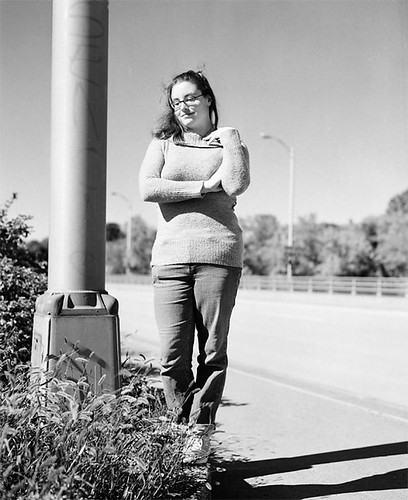 2010.20.07 by bdstickney, on Flickr 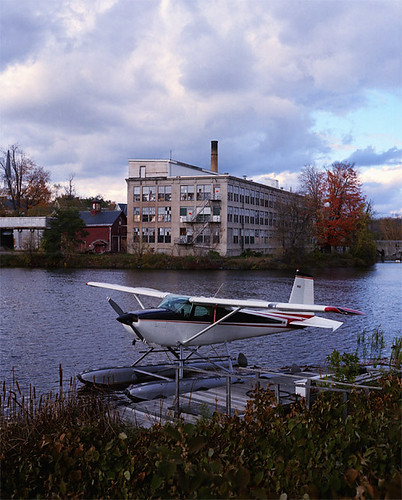 2010.23.06 by bdstickney, on Flickr As a bonus, if you do not like rangefinders, you could pursue the Koni-Omegaflex, a 6x7 TLR with the same lenses and a lot of the other badass features of the Rapid Omega. If that's not a big enough reflex camera, I'm afraid you'll have to go Gowland... While the Rapid Omega is (by virtue of being less famous) an eminently affordable entry to the world of professional-quality medium format, folding cameras and TLRs offer even cheaper options. One TLR in particular is worthy of mention: the good old all-American Ciro-Flex. 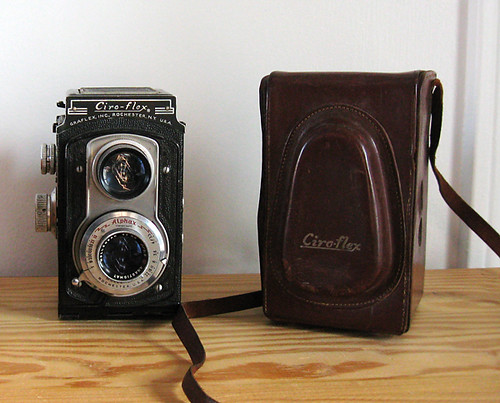 IMG_5570 by bdstickney, on Flickr See those screws on the front? They tell you all you need to know about this camera: It's simple and easy as hell to tinker with. With only a slotted screwdriver, you can get to the shutter innards, mirror, and ground glass. The flash synch wiring and focusing cam are accessible through the open back without taking anything apart. It is the Model T of cameras, and with enough Yankee ingenuity you could probably turn it into a sawmill or a tractor as well.   2011.27.07 by bdstickney, on Flickr Because is it old and simple, it is cheap - $100 or less except when sold on Ebay by people who are clearly smoking something. But it is no slouch as an image-producer. Because medium format does not need to be enlarged as much as 35mm, older lenses are not pushed to their very limits. The Wollensak triplets are decent performers, and are cleverly of a slightly long focal length for 6x6 (85mm f/3.5) which improves corner sharpness without added cost. These Ciros came with ever-set Alpahx shutters with a 1/200 top speed, but there were higher-spec models with a 1/400 cock-and-fire Rapax shutter and a fast Tessar-type lens. They are far less elegant than their German contemporaries (or eventual Japanese competitors), and lack niceties like frame counters and ratchet film advances, but as far as I know they are among the most affordable MF cameras that offer decent lenses and ground-glass focusing. The same forgiveness that lets cheap cameras like the Ciro-flex deliver respectable image quality where comparable 35mm cameras would struggle also makes medium and large format suitable for the tinkerer and the experimenter. Unsharp pinhole images that might look like a dog's breakfast when squeezed onto 35mm film have greater clarity on larger formats while preserving the "look."  2011.16.01 by bdstickney, on Flickr Old lenses and 'alt glass' also show better on larger formats (if they have the coverage), because aberrations on the edges of the images are preserved (the "character" of the lens) while the film size evens out tonality and obscures the worst characteristics of a simpler lens. A 35mm-size crop from the center of a 162mm magnifying glass would be too soft for useful detail work, but not sufficiently interesting to give a unique effect. It would simply be a junk lens. But on a 3x4 packfilm sheet (stand-in for 4x5 film), the particular character of the lens is revealed, and it's possible to see that with a somewhat smaller aperture a humble magnifying glass could be neat for portraits: 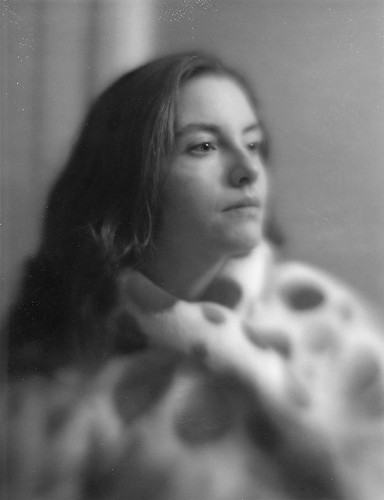 2011.32.03 by bdstickney, on Flickr The ability of MF/LF cameras to shoot instant packfilm also gives a leg up over smaller formats (or digital, even). Need a quick gift for a friend's birthday? Bring a camera with a packfilm back with you to the party and you're all set: 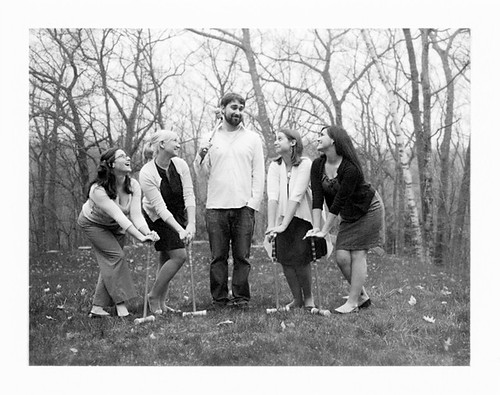 2011.22.08 by bdstickney, on Flickr Finally--old MF/LF cameras are big and made of workable materials like wood and aluminum which makes them less fiddly to alter than small, plastic 35mm cameras, and lens boards are an easier way than adapting a proprietary bayonet mount to use whatever optics you prefer. For instance, all I need to do is cut some plywood and I can try any of these lenses on the Speed Graphic: 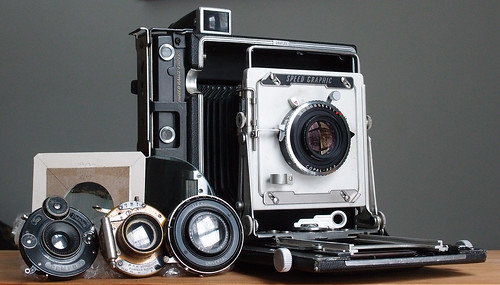 P2080201 by bdstickney, on Flickr ...and a bit more complex construction (have to build a back) will give me a 6x6 camera for which I can do the same: 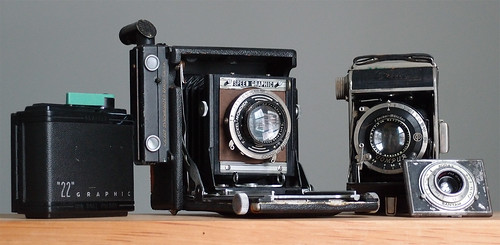 P2080196 by bdstickney, on Flickr I doubt most people in this thread need even this much convincing that MF/LF is great (it is!), but look what it offers: A shitload of cool cameras of all different types, not all of which cost an arm and a leg; the ability to mess around with weird optics and unholy mis-uses of lenses; respectable image quality even with mediocre equipment (the reason 120 was a preferred consumer film format into the 1950s); and a cost per square centimeter per frame exposed that is even lower than 35mm.* How frugal! *8x10 Tri-X is the best deal around in terms of cost/area, last I checked. 120 film was also better than 35mm.
|
|
|
|

|
| # ¿ May 14, 2024 07:51 |
|
VelociBacon posted:The only really interesting camera is the one on the far left. As far as I can tell it's a 1905 Gundlach-Manhattan Optical Co. "Korona Petit" with the "Korona Junior Shutter", made with mahogany and upholstered with 'seal grain cowhide'. I can't quite make out which lens is on it - maybe someone in here will know. The nameplate is missing from the camera unfortunately. Looks like a Rapid Rectilinear lens to me. The type and manufacturer are probably engraved around the barrel of the front element, typical for lenses of that age.
|
|
|


